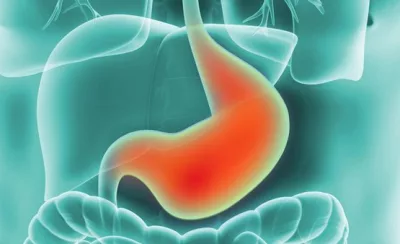What is Down Syndrome?
Down syndrome is a genetic condition in which a person has an extra chromosome. Typically, each child is born with 46 chromosomes, but children with Down syndrome have an extra copy of chromosome 21, a condition also known as Trisomy 21. This additional chromosome affects brain and physical development, leading to intellectual and physical disabilities.
Although individuals with Down syndrome often share similar facial features and behavioral traits, each person has unique abilities. In general, people with Down syndrome have IQs ranging from low to average and may develop speech and language skills more slowly than their peers.
Common signs of Down syndrome in children
Children with Down syndrome often show distinctive characteristics, both physically and cognitively.
Physical traits
Children with Down syndrome may present:
Characteristic facial features: A round face, upward-slanting eyes with a small fold of skin at the inner corner, and a flat nasal bridge are common.
Body traits: Children are often smaller in size and shorter in height compared to peers. They may have low muscle tone and softer body structures, resulting in delayed motor development.
Hands and fingers: Fingers may be shorter than average, and the palm may show a single deep crease (simian crease) instead of the typical two.
Delayed motor skills: Due to weak muscle tone and reduced reflexes, children may take longer to learn basic motor skills such as rolling over, crawling, standing, or walking.
Cognitive delay
Intellectual disability is a hallmark of Down syndrome, causing learning difficulties and delays in developing cognitive skills. Children may also struggle to understand or process information and may have delayed language development. However, each child is different, and early intervention and a supportive environment can make a significant difference.
Behavioral issues
Some children may experience behavioral challenges such as irritability, anxiety, or difficulty regulating emotions. These may affect social interactions and communication. Repetitive behaviors such as hand flapping or jumping may appear, especially in stressful situations.
Associated health problems
Children with Down syndrome are more prone to certain health issues, especially involving the heart, digestive system, and vision. Congenital heart defects such as atrial or ventricular septal defects are common. Vision problems like refractive errors, strabismus, or cataracts can also occur.
Digestive issues such as constipation or irritable bowel syndrome are also frequently seen. Regular health checkups and early intervention are essential to ensure healthy development.
Risk factors for Down syndrome
The exact cause of Down syndrome is not fully understood, but maternal age and genetics play a role. One of the major risk factors is the mother’s age. Women aged 35 or older have a higher chance of having a child with Down syndrome, and this risk increases significantly after age 40.
Parents carrying certain genetic changes can also pass Down syndrome to their child, depending on the specific chromosomal mutation. Prenatal screening and genetic counseling are important for assessing risk.
Down syndrome screening methods
Screening can start between weeks 11 and 14 of pregnancy through ultrasound and blood tests. Common tests include the Double Test, Triple Test, and NIPT (Non-Invasive Prenatal Testing).
Ultrasound
Ultrasound is a non-invasive and useful method for assessing the risk of Down syndrome. It can be performed in both the first and second trimesters. Findings such as increased nuchal translucency, absent or underdeveloped nasal bone, shortened femur or humerus, renal dilation, hyperechogenic bowel, and cardiac anomalies may suggest elevated risk.
Double Test
The Double Test is typically conducted between weeks 11 and 13. It screens for the risk of Down syndrome, Trisomy 18, and Trisomy 13 by measuring levels of free β-hCG and PAPP-A in the mother’s blood. Low PAPP-A and elevated β-hCG levels may indicate increased risk of Trisomy 21.
Triple Test
Conducted in the second trimester, the Triple Test measures three substances: maternal serum alpha-fetoprotein (MS-AFP), human chorionic gonadotropin (hCG), and unconjugated estriol (uE3). These results are interpreted in relation to maternal age to assess the risk of Down syndrome, Edwards syndrome, neural tube defects, Turner syndrome, and other genetic conditions.
NIPT
NIPT (Non-Invasive Prenatal Testing) is an advanced technique that analyzes cell-free fetal DNA in the mother’s blood using gene sequencing technology. It offers high accuracy in detecting chromosomal abnormalities without invasive procedures like amniocentesis, making it safe for both mother and fetus.
If initial screenings indicate a high risk, further diagnostic tests may be recommended to confirm the presence of Down syndrome.
What to do if your baby is diagnosed with Down syndrome
While no parent wishes to receive this diagnosis, it is crucial to remain calm and well-informed. If the baby is at high risk based on screening results, follow-up diagnostic testing is necessary. Parents should seek medical advice to determine the best course of care and preparation.
Raising a child with Down syndrome requires multidisciplinary support, including healthcare, education, and community resources. A comprehensive care plan helps children maximize their potential and live happy, meaningful lives.
If you are at high risk of having a child with Down syndrome or already have a child with the condition, it is important to consult genetic and prenatal specialists before planning a future pregnancy. They can help you understand your risk, available tests, and the pros and cons of each approach.
Additionally, routine prenatal checkups are key to detecting any abnormalities early. Expecting mothers can explore maternity programs at reputable medical institutions, such as Hanoi French Hospital, which offer comprehensive prenatal, delivery, and postpartum care.
With experienced obstetricians and state-of-the-art facilities, our maternity care programs help ensure a safe and healthy pregnancy journey.
Note: This article is for reference only and does not replace medical diagnosis or professional consultation. Patients should visit reputable healthcare facilities and follow medical advice for accurate diagnosis and treatment.
Down syndrome is a genetic condition that affects physical and intellectual development. While it cannot be cured, early detection and intervention can significantly improve a child’s quality of life. If you would like to learn more, please contact our healthcare professionals for dedicated support.







